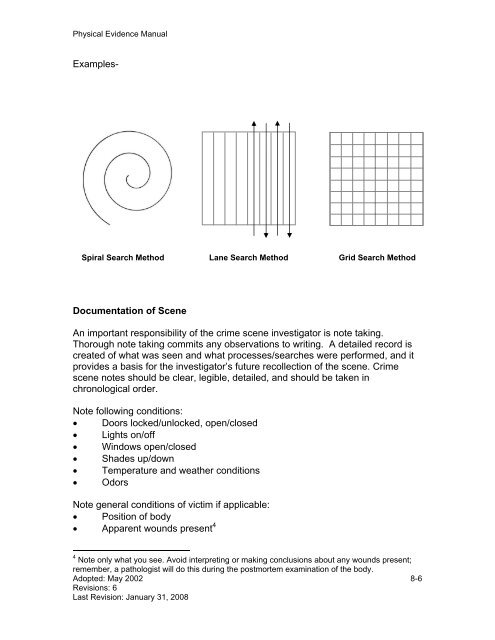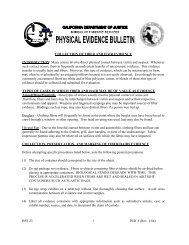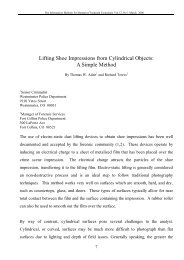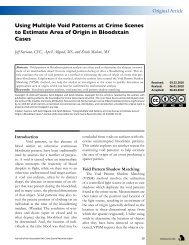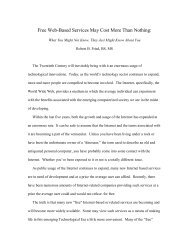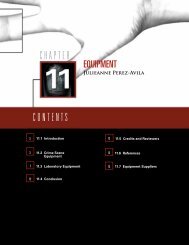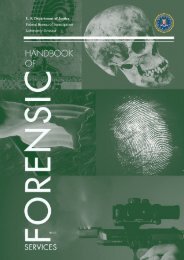PHYSICAL EVIDENCE MANUAL - Crime Scene Investigator Network
PHYSICAL EVIDENCE MANUAL - Crime Scene Investigator Network
PHYSICAL EVIDENCE MANUAL - Crime Scene Investigator Network
Create successful ePaper yourself
Turn your PDF publications into a flip-book with our unique Google optimized e-Paper software.
Physical Evidence Manual<br />
Examples-<br />
Spiral Search Method<br />
Documentation of <strong>Scene</strong><br />
Lane Search Method<br />
An important responsibility of the crime scene investigator is note taking.<br />
Thorough note taking commits any observations to writing. A detailed record is<br />
created of what was seen and what processes/searches were performed, and it<br />
provides a basis for the investigator’s future recollection of the scene. <strong>Crime</strong><br />
scene notes should be clear, legible, detailed, and should be taken in<br />
chronological order.<br />
Note following conditions:<br />
• Doors locked/unlocked, open/closed<br />
• Lights on/off<br />
• Windows open/closed<br />
• Shades up/down<br />
• Temperature and weather conditions<br />
• Odors<br />
Note general conditions of victim if applicable:<br />
• Position of body<br />
• Apparent wounds present 4<br />
Grid Search Method<br />
4<br />
Note only what you see. Avoid interpreting or making conclusions about any wounds present;<br />
remember, a pathologist will do this during the postmortem examination of the body.<br />
Adopted: May 2002<br />
8-6<br />
Revisions: 6<br />
Last Revision: January 31, 2008


